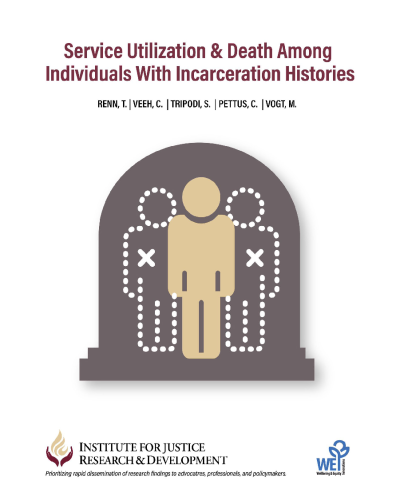
Service Utilization & Death Among Individuals with Incarceration Histories
Published:
| Author: Tanya Renn, Christopher Veeh, Stephen Tripodi, Carrie Pettus-Davis, Megan Vogt
Individuals releasing from prison have a higher death rate than the general population. Few studies have explored pre-incarceration service utilization and health among those who die after prison. This paper fills the gap by exploring service usage and health trends among individuals who died and those who survived.
Category:

The Relationship between Lifetime Opioid Use and Mental and Physical Health among Incarcerated Individuals
Published:
| Author: Tanya Renn, John Moore, Christopher Veeh, Carrie Pettus
Relationships between opioid use and health, both physical and mental, have been discovered over the last decade or so, but these relationships have yet to be explored among incarcerated individuals. These relationships are important as they may have implications on the health of those who are incarcerated and nearing reentry, because higher rates of opioid use, as well as poor physical and mental health, are found among those who are justice-involved compared with the general population.
Category: Substance Use, Mental Health, Incarceration

Traumatic Brain Injury and Health-Related Quality of Life: A Cross-Sectional Study of Incarcerated Adults
Published:
| Author: Christopher Veeh, Tanya Renn, John Moore
Informed by the health-based model of desistance, the current study undertook a preliminary investigation into whether TBI impacted levels of HRQoL in incarcerated adults who are preparing to be released from prison. The following research question guided the study: Do incarcerated adults with a lifetime history of TBI report lower HRQoL compared with incarcerated individuals without a TBI history? We hypothesized that TBI would have a negative association with an individual’s HRQoL.
Category: Incarceration, Mental Health
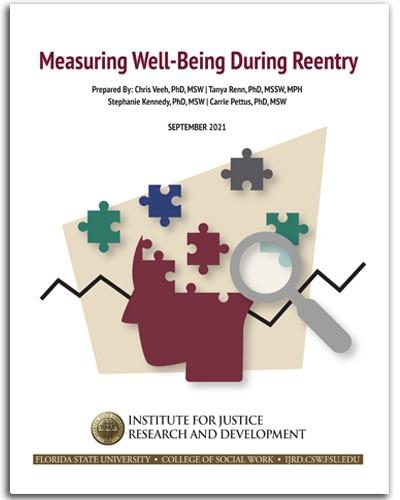
Measuring Well-Being During Reentry
Published:
| Author: Christopher Veeh, Tanya Renn, Stephanie Kennedy, Carrie Pettus
A growing number of scholars and reentry practitioners are seeking alternative approaches to identify how community stability and success can be measured for those returning home from incarceration to our communities. Our team developed a well-being-oriented conceptual framework – the Well-Being Development Model – and a manualized reentry program approach – the 5-Key Model for Reentry – which focus on human potential and thriving.
Category: 5-Key Model for Reentry, Well-Being

The Well-Being Development Model: A Theoretical Model to Improve Outcomes among Criminal Justice System–Involved Individuals
Published:
| Author: Carrie Pettus, Christopher Veeh, Tanya Renn, Stephanie Kennedy
This article proposes a new conceptual framework, the Well-Being Development Model (WBDM), to support the development, implementation, and assessment of innovative reentry interventions designed to increase well-being among the millions of individuals released from prisons and jails each year. In contrast to prominent models guiding reentry services, the WBDM increases incarcerated and formerly incarcerated individuals’ capacity to reach their full potential while addressing common problems and barriers to success.
Category: Well-Being, Reentry

The metropolitan context of substance use and substance use disorders among US adults on probation or parole supervision
Published:
| Author: John Moore, Tanya Renn, Christopher Veeh
Rates of substance use and substance use disorders are higher among adults on probation or parole supervision compared to the general population. Substance use is a risk factor for not adhering to supervision requirements, which may result in revocation and incarceration. Examining associations of metropolitan area status with substance use and substance use disorders may identify specific substance use behaviors that can be targeted in community corrections prevention and treatment services.
Category: Substance Use, Community, Criminal Justice System
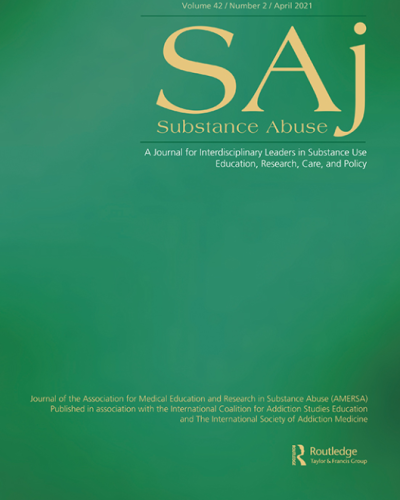
The metropolitan context of substance use and substance use disorders among US adults on probation or parole supervision
Published:
| Author: John Moore, Tanya Renn, Christopher Veeh
Study findings highlight the differences of substance use and substance use disorders between levels of metropolitan areas for those on probation or parole. Findings suggest that cocaine use should be emphasized in clinical services in large metropolitan areas, whereas methamphetamine use may be prioritized in nonmetropolitan areas.
Category: Substance Use, Probation and Parole
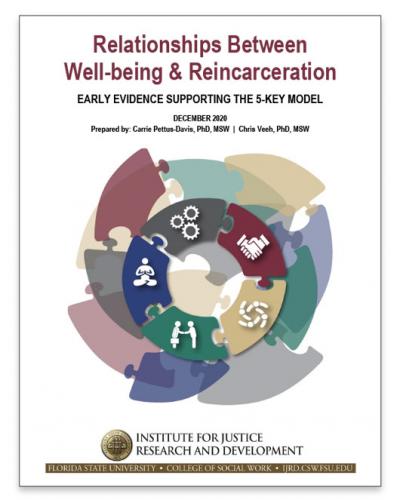
Associations between Well-Being and Reincarceration
Published:
| Author: Carrie Pettus-Davis, Christopher Veeh
Preliminary findings from the 5-Key Model study suggest that participation in 5-Key Model services was associated with reduced reincarceration at 8 and 15 months post-release. Increased overall well-being and increased well-being on each of the 5 Keys were also associated with reduced reincarceration; those receiving the 5-Key Model had higher levels of well-being at 15 months post-release.
Category: 5-Key Model for Reentry, Well-Being

The Role of Preparatory Programming in Increasing the Effectiveness of a Sex Offender Treatment Intervention
Published:
| Author: Tanya Renn, Christopher Veeh, Melissa D. Grady, David Edwards, Carrie Pettus-Davis, Katherine Kelton
Increasing the effectiveness of programs designed to treat individuals who have sexually offended is a critical step in reducing the rates of sexual violence in our communities. Yet, the research on such programs have yielded inconsistent results with regards to their effectiveness in reducing sexual recidivism among participants. Some researchers have explored whether the dose of treatment impacts recidivism, but there remains limited knowledge around the dose-response relationship for individuals who have sexually offended.
Category: Sex Offenders

The Role of Preparatory Programming in Increasing the Effectiveness of a Sex Offender Treatment Intervention
Published:
| Author: Tanya Renn, Christopher Veeh, Melissa D. Grady, David Edwards, Carrie Pettus, Katherine Kelton
Increasing the effectiveness of programs designed to treat individuals who have sexually offended is a critical step in reducing the rates of sexual violence in our communities. Yet, the research on such programs have yielded inconsistent results with regards to their effectiveness in reducing sexual recidivism among participants. Some researchers have explored whether the dose of treatment impacts recidivism, but there remains limited knowledge around the dose-response relationship for individuals who have sexually offended.
Category: Sex Offenders, In-Prison Intervention

A Point-In-Time Survey of State Department of Corrections Prison-based Programming
Published:
| Author: Tanya Renn, Carrie Pettus-Davis, Christopher Veeh
Research indicates that providing services to incarcerated individuals increases the chance that they will be successful upon reentry to communities. The current study assessed the provision of services (i.e. trauma and reentry) in state departments of corrections (DOCs) throughout the United States. DOCs from all fifty states and the District of Columbia were contacted to determine what services were provided to prisoners, with 44 of 51 providing responses. Results suggest that DOCs provide a range of programming, as well as assessments.
Category: In-Prison Intervention

Reforms of Policy Barriers to Positive & Productive Community Engagement of Individuals with Felony Histories
Published:
| Author: Carrie Pettus-Davis, Christopher Veeh, Sheree Hickman
Over the past four decades, civil disability policies have proliferated throughout the United States in tandem with the rising use of criminal sanction as social policy. There are currently more than 45,000 different state and federal statutes that impose a type of civil disability on individuals with a felony conviction. This preliminary report provides a brief overview of the reform efforts that have thus far been enacted, but not introduced, to either eliminate or ameliorate existing civil disability policies at the state level between 2010 and 2017.
Category: Civil Disabilities

Employment and Behavioral Health-5-Key Model Preliminary Results for Policy Stakeholders
Published:
| Author: Carrie Pettus-Davis, Tanya Renn, Christopher Veeh
This report features preliminary 5-Key Model results on study participant employment and behavioral health outcomes approximately eight months post-release. Results are presented by state to maximize usefulness to policy stakeholders.
Category: 5-Key Model for Reentry, Results for Policymakers

Intervention development study of the five-key model for reentry: An evidence-driven prisoner reentry intervention
Published:
| Author: Carrie Pettus-Davis, Tanya Renn, Christopher Veeh, Jacob Eikenberry
Over the past decade and a half, substantial resources were poured into the development of prisoner reentry programs. However, the excitement that surrounded the initial rollout of reentry programs has begun to wane from a lack of substantive change to the number of individuals who return to prison. Therefore, this article details the development of an intervention that can provide a new path forward for prisoner reentry programs.
Category: 5-Key Model for Reentry, Well-Being
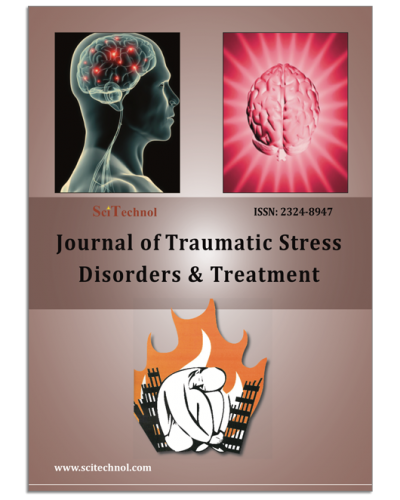
What Trauma Looks Like for Incarcerated Men: A Study of Men’s Lifetime Trauma Exposure in Two State Prisons
Published:
| Author: Maria Morrison, Carrie Pettus-Davis, Tanya Renn, Christopher Veeh, Christopher Weatherly
While it is understood that high rates of trauma exposure are common among incarcerated male populations, there is limited data on the nature of the trauma exposure. This study examined the trauma histories of a randomly selected sample of 67 men incarcerated in the Missouri Department of Corrections. The analyses revealed several patterns among study participants, including near universal trauma exposure in adolescence with the most frequent exposures involving witnessing or being proximate to violent deaths of family and friends.

